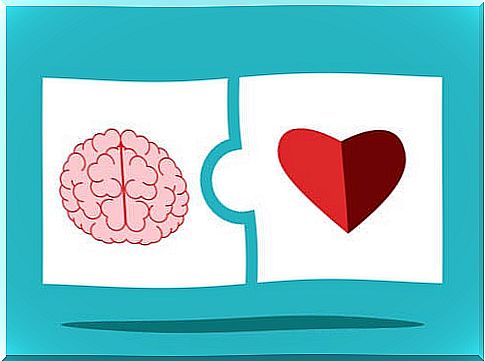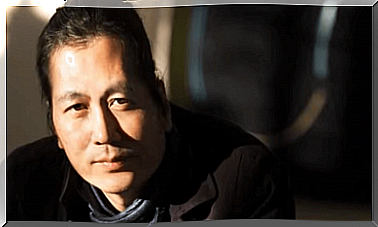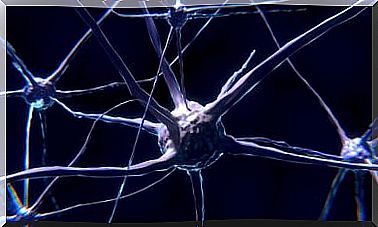Emotional Intelligence According To Salovey And Mayer

In recent years, emotional intelligence has jumped to the top positions in shop windows. More and more people are interested in their study and in how knowledge can help them to be better emotional managers. However, few really know its origin. We can place its appearance in 1990, in a book in which Salovey and Mayer try to explain what emotional intelligence is and how it is articulated in our behaviors and minds.
Salovey is a professor at Yale University, while Mayer was a post-doctoral student at this time. They researched together and published numerous articles on the subject. Despite this, many people attribute the concept to its best popularizer, Daniel Goleman: he popularized the concept of emotional intelligence according to Salovey and Mayer in 1996, after publishing a book called Emotional Intelligence: Why It Is More Important Than IQ .
The concept of emotional intelligence is slightly different for Salovey and Mayer than it is for Goleman. Because of this, there has been some confusion as to what his original theory was. In this article we will see exactly what it consists of for the two authors who shaped it.

What is emotional intelligence according to Salovey and Mayer?
According to the definition included in his first book, emotional intelligence is the ability to process information about one’s own emotions and those of others. In addition, it also includes the ability to use this information as a guide for thinking and behavior.
Thus, people with emotional intelligence pay attention to, use, understand and manage emotions. On the other hand, these skills serve adaptive functions that provide advantages to themselves and others. To consider that a person has high emotional intelligence, these two authors spoke of four basic skills:
- Ability to perceive and express one’s own and others’ emotions correctly.
- Ability to use emotions in a way that facilitates thinking.
- Ability to understand emotions, emotional language, and emotional signs.
- Ability to manage emotions in order to achieve goals.
In this model of emotional intelligence, each of the fields develops in four different phases. This process, however, does not have to happen spontaneously. On the contrary, it usually requires a conscious effort from the person. We will now look at the four phases in more detail.
1- Correct perception and expression of emotions
The first skill of emotional intelligence according to Salovey and Mayer is the identification of one’s own and others’ emotions. First of all, the person must be able to understand what he is feeling. This includes emotions, but also thoughts – both derivatives and those that generate them. Later, in the second phase, the ability to do the same with foreign states is acquired. For example, the feelings of other people, or those expressed through art.
In the third phase, the person acquires the ability to express their emotions correctly. Thus, he also learns to convey his needs related to his feelings. In the fourth phase, finally, the ability to distinguish between correct and incorrect expressions of the emotions of others is achieved.
2- Emotional thought facilitation
In the first phase, people direct their thinking to the most important information. Here, one’s own feelings are not yet taken into account. In the second stage, on the contrary, emotions begin to be perceived with sufficient intensity to be identifiable. Therefore, the person is able to use them to help make a decision.
According to Salovey and Meyer, in the third phase the emotions would cause the person to fluctuate from one emotional state to another. Thus, you could consider different points of view on an issue. Finally, in the fourth stage, the person’s feelings would lead them to make more correct decisions and to think more creatively.
3- Understanding of emotions
First, the ability to distinguish one basic emotion from another is acquired, and to use the appropriate words to describe them. This ability is then taken one step further, allowing the person to place that feeling in their emotional state.
In the third phase, the person is able to interpret complex emotions. For example, a reaction that mixes disgust and fascination or fear and surprise. Finally, the ability to detect the transition between two emotions, such as from anger to shame or from surprise to joy, would also be acquired.

4- Ability to manage emotions to achieve goals
In the first place, this capacity requires the will not to limit the role that emotions actually have . This, which is easier to achieve with positive emotions, costs considerably more with negative ones. In this step we will go further, allowing us to choose which feelings to identify with based on whether they are useful or not.
In the previous step, the person would acquire the ability to study emotions in relation to oneself and to others. This would be done based on how influential, reasonable, or clear they are. And finally, the person would be able to manage their own and others’ emotions, moderating the negative ones and increasing the positive ones.
Emotional intelligence: a practical skill
The model of emotional intelligence according to Salovey and Mayer does not collect, by far, everything that we know today about emotional intelligence. However, it returns us to the origin of the concept, to the foundations, to what was once a true revolution.
Perhaps the strongest point of this model is its simplicity and the fact that it has a graduation that facilitates its understanding. Thus, it is a magnificent starting point to immerse ourselves in the wonderful world of emotions. The one that, willingly or not, is ours.









